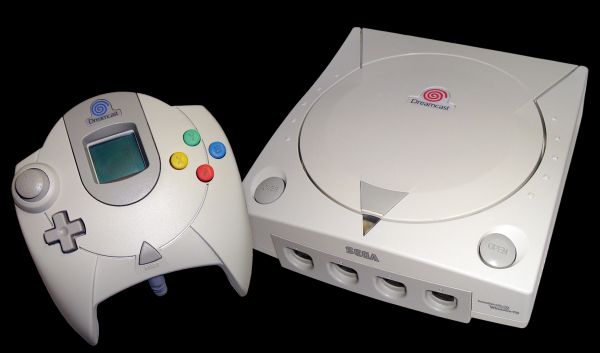Dreamcast History
An established leader in the arcade, Sega entered the home market right on the heels of Nintendo. Renamed the Sega Master System, the system known as the Mark III in Japan debuted in the United States in 1986. The Sega Master System used an 8-bit CPU, 128K ROM-based operating system and had a 128K of RAM. Games came on two types of cartridges: a large cartridge that could hold a megabit of game code, and a smaller cartridge that held 256 kilobits of game code.
In 1989, Sega introduced the world’s first 16-bit home video game system, the Genesis. Based on Motorola’s 68000 processor, the system was technically superior to anything else on the market. But the sheer dominance of Nintendo overshadowed the Genesis, when the rival company debuted the Super Nintendo Entertainment System later that same year.
But Sega beat Sony and Nintendo to the punch with a 32-bit system. The Saturn was officially launched on May 11, 1995. Not only was it the first 32-bit system, but it had two 28.8 MHz 32-bit Hitachi SH-2 processors working in parallel! Sega’s Saturn was an amazing system with an incredible architecture, but quickly fell behind the other 32-bit system released that year, Sony’s PlayStation.
Code-named Katana, the Dreamcast was released in the fall of 1999, the first system to provide a built-in modem and 128-bit graphics.
Dreamcast Console
Lets take a look at the components inside a Dreamcast, and what their capabilities are:
Processor: 64-bit Hitachi SH-4
Processor: 64-bit Hitachi SH-4
- Processor clock speed: 200 MHz
- MIPS (Million Instructions Per Second): 360
- Bus speed: 800 MB per second
- Cache: Instruction: 8 K; Data: 16 K
Graphics: 128-bit 100 MHz NEC PowerVR 2DC
- Resolution: 640×480 or 320×240 interlaced
- Colors: 24-bit (16,777,216) maximum, as well as 16-bit (65,536) mode
- Polygon rendering: 3,000,000 polygons per second
- Memory: 8 MB video RAM
Geometry engine:
- Alpha blending
- Perspective correction
- Gouraud shading
- Anistropic, bilinear and trilinear mip mapping
- Z-buffer
Audio: 45 MHz Yamaha Super Intelligent sound processor
- Channels: 64
- Sample rate: 44.1 KHz
- Special effects: reverb, delay and surround sound
- Memory: 2 MB RAM
Memory: 16 MB
Operating system: Windows CE-based or custom Sega OS
Game medium: Proprietary GD-ROM (Gigabyte Disc)
- Transfer speed: 1800 kilobytes per second
- Storage capacity: 1.2 gigabytes
- Memory buffer: 128 K
Modem: 56 kilobits per second (Kbps)
The Dreamcast is the first console that has a built-in 56 Kbps modem. It was added to enable online play over a phone line, allowing users to play games against each other across long distances. In addition to the built-in modem, Sega is working on a cable or DSL external modem. Broadband networks are being developed that will take advantage of such a modem and enable fast online games for the Dreamcast.
For more detail: How Dreamcast Works

